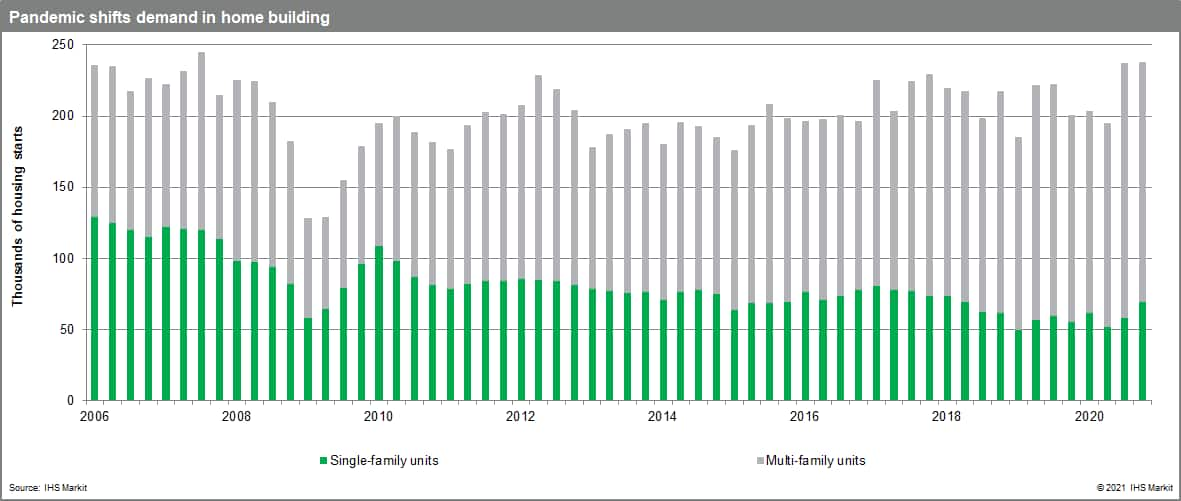Canadian housing starts soften in December
- December Canadian housing starts declined 12.6% month on month (m/m) to 228,279 units (annualized).
- Starts across all segments were down in the month, with the 15.5% m/m drop in urban multi-family units leading the overall decline.
- The December decline in total housing starts was a bit weaker than projected, but annual starts were the strongest since 2017. Strong demand will keep starts elevated but softer in 2021 with slower population growth.
Although urban and rural housing starts were lower in the month, they remained at robust levels. Given the high levels over the past several months, the six-month housing starts trend hit a 13-year high at 239,052 units.

Alberta and New Brunswick were the only provinces to buck the national trend, as starts were up in December; however, compared to a year ago, Alberta and most of Atlantic Canada were the only regions where starts were down. Note, CMHC noted that, due to the pandemic, Kelowna housing starts were not included in the December figures. The missing starts would not impact the overall direction of housing trends. Regional 2020 figures show that Ontario and Quebec housing starts advanced at double-digit paces, even with the most severe restrictions during the initial months of the pandemic, climbing to the highest levels in 16 years. These solid gains were due to the substantial jump in urban multi-family units in both provinces to reach record highs.
The last three months saw a solid upswing in rural and single-family units, well above the previous year's levels. Single-family homebuilding is up across all provinces, so this isn't just a specific regional issue; however, looking at the same trend for multi-family units, they are up in six provinces. Last year marked the first time rural and urban single starts advanced since 2016.
Demand conditions are shifting and homebuilders will have to adjust to meet demand, which will lead to higher costs, as indicated in recent jumps in the new home price index. Ontario's latest pandemic restrictions are putting a hold on nonessential construction activity, so new home builds will be lower for most of January and the beginning of February. This announcement will not make a permanent dent on robust housing demand. Slightly weaker population growth should not throw current trends off course, as upbeat sentiment about vaccines should lift immigration patterns again soon. Starts are expected to average just above 200,000 units this year.
